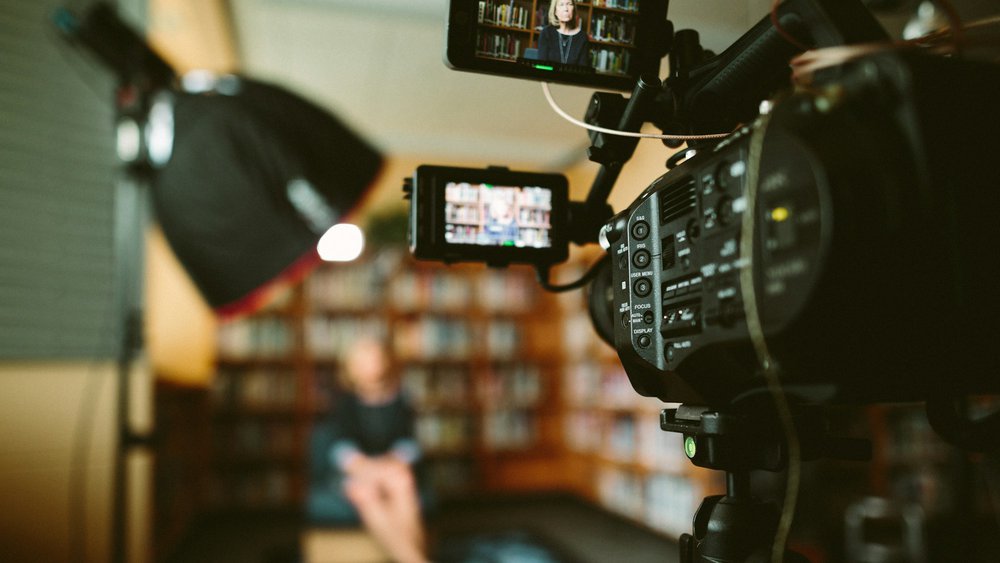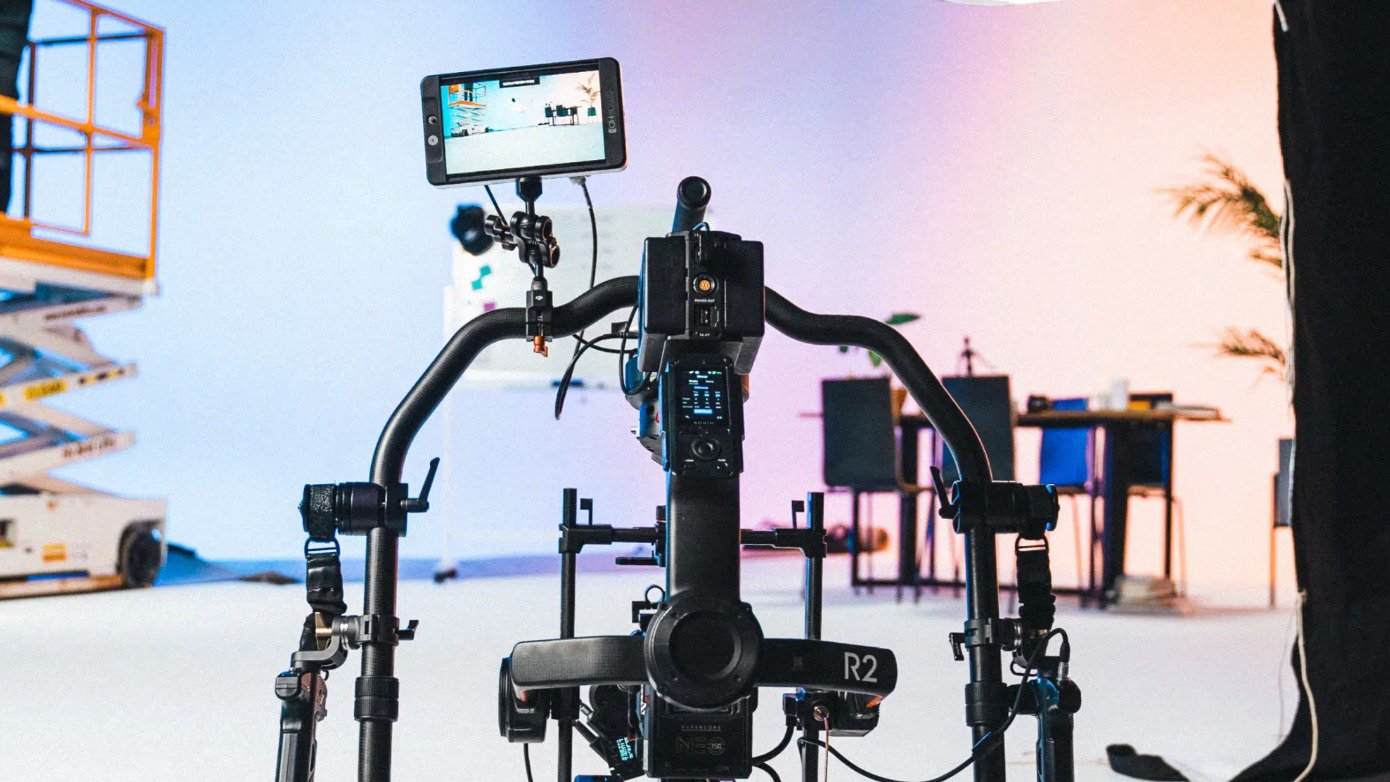Want to create educational video content that engages, entertains, and educates your audience while positioning yourself as an expert? Whether you're a teacher, leader, or solopreneur, understanding educational video production can help you build awareness and trust in 2025.
What Is Educational Video Production?

Educational video production involves creating videos designed to teach or inform viewers. This can range from online courses for e-learning platforms and corporate training videos to instructional content for customers or employees. These videos vary from short tutorials to comprehensive video courses tailored to specific educational objectives.
In 2025, educational videos are more important than ever, with 86% of all online video consumption made up of eLearning content, according to recent industry insights. This highlights the growing demand for engaging educational content that simplifies complex topics and improves knowledge retention.
Planning Your Educational Videos: Key Considerations
Know your target audience. Understanding who will watch your videos helps determine the style and complexity of your content. For example, animated educational videos or explainer videos with dynamic visuals may suit younger learners or tech-savvy audiences, while straightforward instructional videos might work better for professional training.
Define your educational goals. Are you aiming to improve employee training, onboard customers, or provide certification? Clear goals guide your video length, format, and content.
Choose the right distribution method. Decide if your videos will be free, subscription-based, or part of a larger course on an eLearning platform. This affects how you design and package your content.
Consider production scale and quality. High-quality videos with custom animations, multiple camera angles, and professional voiceovers can elevate your brand but require a higher educational video production cost. Alternatively, simpler videos can still be effective when well-scripted and focused.
The Educational Video Production Process
Producing impactful educational videos involves several stages, each critical to achieving your learning outcomes.
Concept Development and Scriptwriting
Start by developing a concept that aligns with your educational objectives and audience needs. Collaborate closely with instructional designers or subject matter experts to ensure content accuracy and relevance.
Scriptwriting is essential to structure your message clearly. A typical script for explainer or training videos includes:
- Introduction to set context
- Problem identification to engage viewers
- Explanation of solutions or key concepts
- Call to action or next steps
Keep your language simple, sentences short, and tone conversational to enhance learner engagement.
Voiceover and Storyboarding
Once the script is finalized, record a professional or in-house voiceover. This audio guides the storyboarding process, where you plan visual elements and timing. Storyboards help visualize how complex concepts will be simplified through animation, live-action footage, or graphics.
Production and Animation
Whether you choose live filming or animation, this stage brings your storyboard to life. Many educational video production services offer animated explainer videos that use dynamic visuals to clarify complex ideas effectively. Tools like Adobe Creative Suite or platforms such as Animaker can be used, or you can partner with a full-service company for a polished final product.
Post-Production
In post-production, editors add finishing touches—syncing audio, adding sound effects, music, and visual effects that complement the story without overpowering it. This phase ensures the final product is polished, engaging, and aligned with your educational goals.
Types of Educational Videos That Work Best in 2025
- Microlearning modules: Short, focused videos ideal for quick knowledge retention.
- Animated educational videos: Use dynamic visuals to simplify complex topics.
- Scenario-based videos: Help learners apply concepts through real-world examples.
- Video courses: Comprehensive series that cover broader subjects or skills.
- Interactive videos: Incorporate quizzes and decision points to boost engagement.
- Corporate training videos: Streamline onboarding and compliance with consistent messaging.
Measuring the Effectiveness of Educational Videos
To ensure your videos meet learning objectives, track metrics such as:
- Completion rates
- Quiz or assessment results
- Post-video surveys and feedback
Advanced video analytics tools help you understand learner engagement and knowledge retention, allowing continuous improvement of your educational content.
Why Invest in Professional Educational Video Production Services?

Partnering with experts offers several advantages:
- Technical expertise ensures high-quality videos with professional lighting, sound, and editing.
- Instructional design knowledge helps simplify complex concepts effectively.
- Full-service approach covers the entire process from concept development to final delivery.
- Access to interactive elements like quizzes and branching scenarios.
- Ability to produce custom training videos tailored to your organization's needs.
Case Studies: Real-World Success with Educational Videos
Educational video production has transformed training and marketing for many organizations. For example, a recent project for a healthcare provider reduced training time by 50% while improving compliance rates by 20%. Another case study for a tech company demonstrated increased customer engagement through animated explainer videos simplifying blockchain technology.
Explore more examples in our case studi
See the video case study we completed for Humantech of their client Wells Enterprises (Blue Bunny):
Final Thoughts
In 2025, educational video production remains a powerful tool for engaging learners, simplifying complex topics, and boosting knowledge retention across multiple platforms. Whether you’re creating short tutorials or full video courses, investing in professional production services can help you deliver impactful, high-quality videos that meet your educational goals.
Frequently Asked Questions
What is the average educational video production cost?
Costs vary based on video length, complexity, and style. Typically, professional videos range between $7,000 and $12,000. Factors include script development, talent, equipment, and post-production. Learn more about pricing and services on our video production services page.
Can educational videos be used for nonprofit organizations?
Yes, nonprofits benefit greatly from educational videos to raise awareness and educate audiences. Videos can be tailored to specific missions and distributed widely to maximize impact. See examples of nonprofit projects in our portfolio.
How long does it take to produce an educational video?
Production timelines usually range from 4 to 12 weeks depending on video length and complexity. Pre-production, filming or animation, and post-production all influence delivery time. Contact us for a custom timeline based on your project needs.
What types of interactive elements can be added to educational videos?
Interactive features include quizzes, branching scenarios, clickable hotspots, and decision points that enhance learner engagement and retention.
For more insights and examples, visit our blog or reach out via our contact page to discuss your educational video needs.









